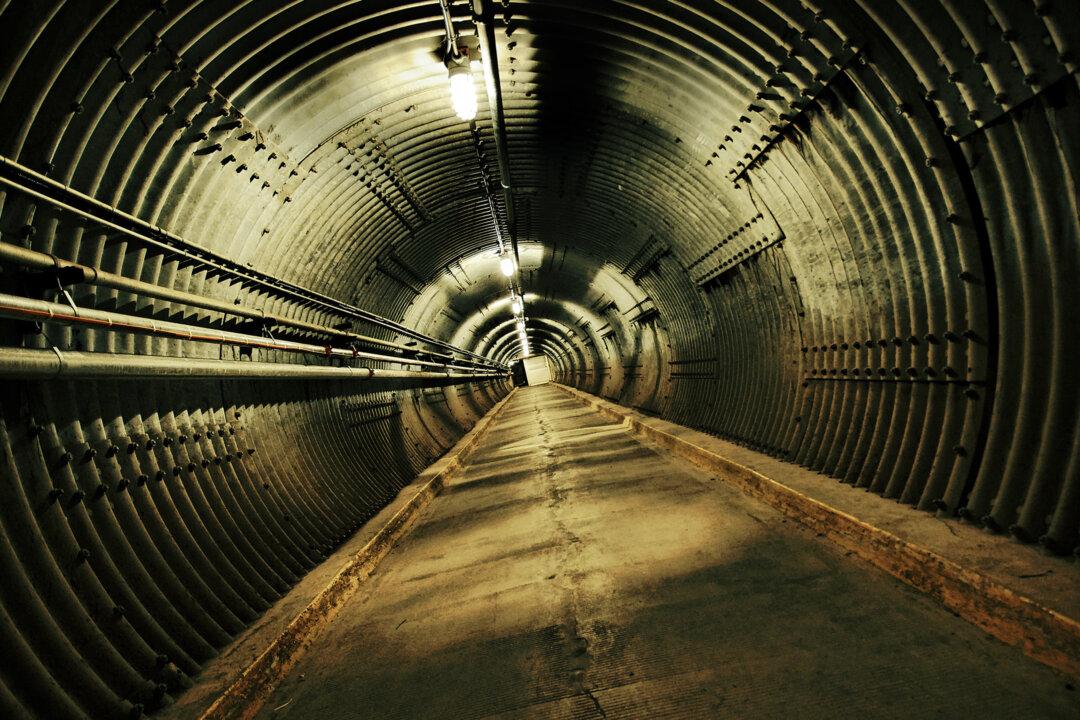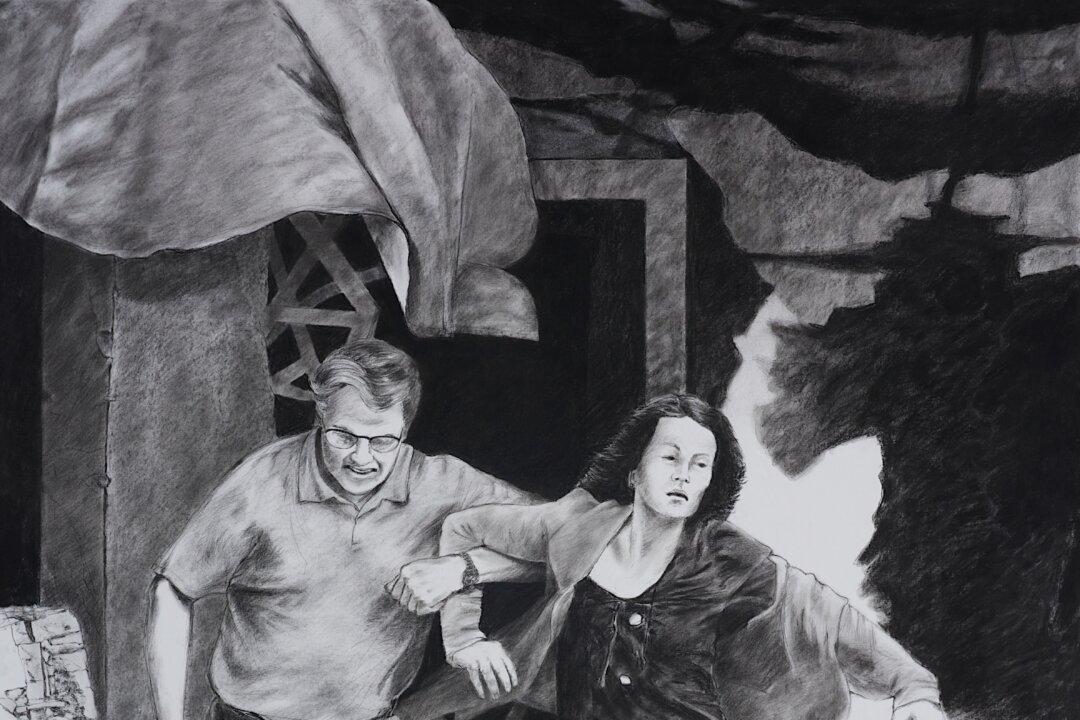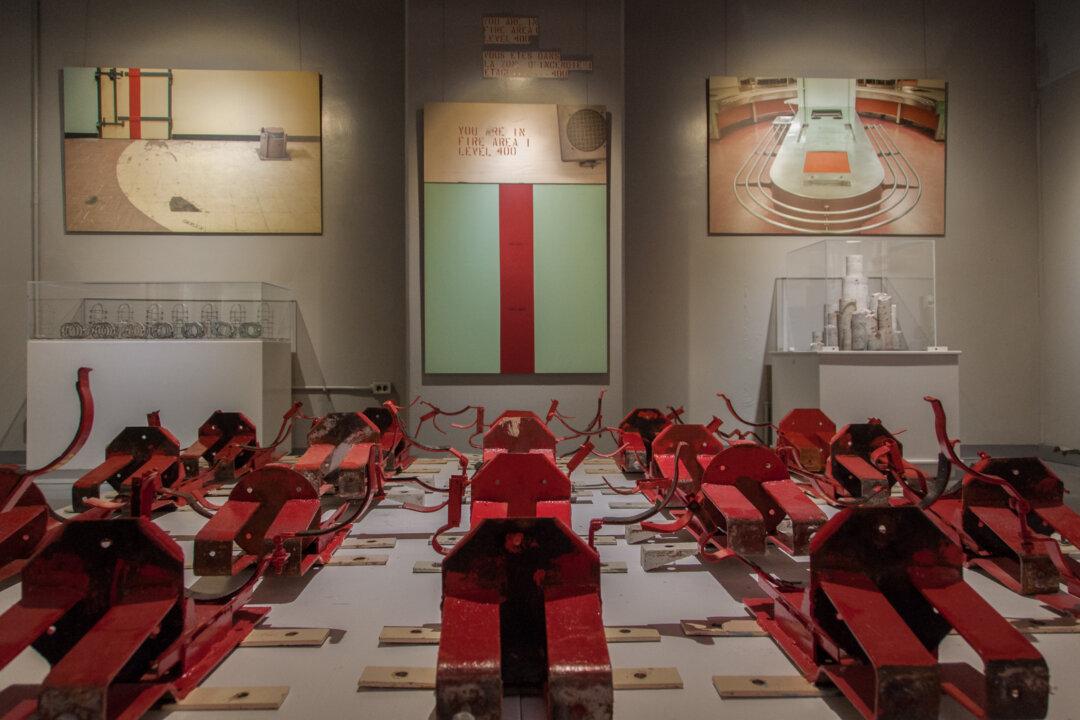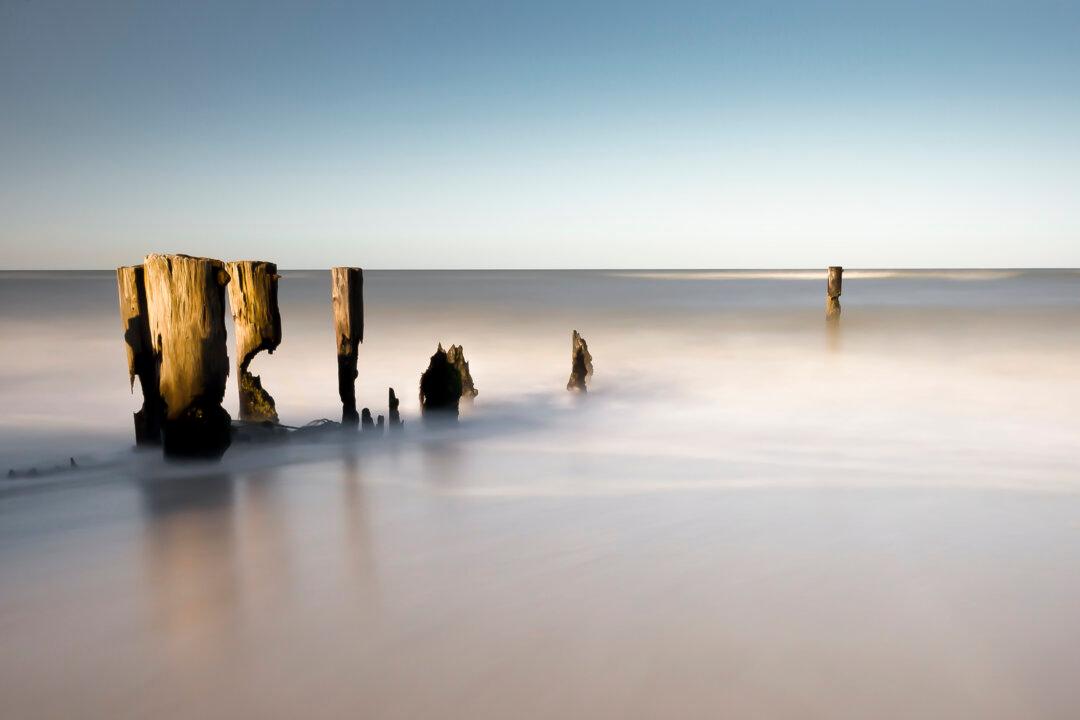Not far from Parliament Hill in downtown Ottawa, a mere 35 km west as the crow flies, Prime Minister John Diefenbaker’s government of the day implemented a secret project centered on the design and construction of a bomb shelter.
It was to be a mammoth bunker, one unlike any ever built before—a bolthole designed to withstand a nuclear blast. The bunker would be dug into the rock of rural Ontario.
This was in 1958, and at that time there were three nations with nuclear capabilities: the United States, the Soviet Union, and the United Kingdom. In 1960, France, too, would become one of the nuclear powers.
Construction of Canada’s secret bunker began in 1959 and was completed two years later.
The government fully intended to survive the blasts of any nuclear war. By taking shelter in its “hidey-hole”—300 rooms dug four stories into the rock—the government expected to emerge unscathed 30 days later, by which time they believed the radiation and fallout would have cleared.
There would be work to be done: the work of restoring peace, order, and good government clear across the land. Upon emerging, what would these men and women have found?
The Diefenbunker
Today, this building is known as the Diefenbunker: Canada’s Cold War Museum. It is a community museum, operated entirely by volunteers and open to the public year-round. More than 47,000 people annually visit this national historic site.
The Diefenbunker’s program of community activities includes seminars, workshops, film programs, music concerts, even “spy camps” for children in the summertime. Importantly, the museum’s interpretive curatorial program also includes invitations to visual artists to participate in their programming.
The current exhibition, titled “To warn other Canadians,” is the work of Gail Bourgeois. For six months the artist-in-residence was given free rein in the museum’s archives to research the history of the Diefenbunker, its purpose, and the Cold War era—that period of madness that Cold War military strategists themselves termed “mutually assured destruction.”
Bourgeois worked diligently, with grace and insight, to produce a series of 112 small black and white drawings. The imagery is simple—a drawing of a sealed but unaddressed envelope, for example, lies atop a map. What is in the envelope? We do not know. But the map, which the artist found in the museum’s archives, identifies targets for bombing.
Bourgeois’ drawings are hung throughout the 300 rooms of the bunker—sometimes individually, but more often in groups. In every instance, the artist alerts the visitor to her work by posting nearby a small black silhouette of an air raid siren. On the walls are no labels for the art. One must look closely at each of the drawings, not read about them. Each air raid silhouette is keyed to a room number on the bunker map the visitor is given. The work is clear, but not loud. Look. Listen closely. This matters.
In the CBC Emergency Broadcast Studio, for example, are four collations of 24 drawings. One group, titled “Forearmed is Forewarned,” presents eight images of Cold War civilian life—the world outside. The imagery includes newspaper headlines: the execution of the Rosenberg spies, problems with food supplies. Another set of four images, “Inexplicable Folly,” references Berlin’s Brandenburg Gate. A woman walks by a sign denoting the U.S. sector.
A soldier’s combat boot is drawn in silhouette. In a third grouping, “Potsdam Conference,” we see photographs of Churchill, Truman, and Stalin at the Potsdam conference in 1945. Stalin’s hands appear twisted. The others at the table seem calm. Their conference ended Aug. 2; the first atomic bomb was dropped four days later. Bourgeois’s drawings add jesters, black crows, and blasted bodies to the archival imagery.
Collapsing Time
In the 1950s, the tactical use of nuclear weaponry was thought possible. True, casualties would be heavy should the Cold War become a “hot war;” but some would survive, and democratic governments could and should survive. Canada had a role to play if the “free world” was to win the great game.
The Diefenbunker was designed to house 535 people, mostly men. Some would have been very important government officials—the prime minister, his war cabinet—others would be staff necessary to look after their needs.
Broadcast personnel from the CBC as well as medical and dental personnel were on the designated list of evacuees. So, too, were selected departmental officials from Public Works, Agriculture, Canadian Mortgage and Housing Corporation, and Energy, Mines, and Resources. All would have been part of putting Canada back together again in the event of a nuclear war.
What would they have talked about in their 30 days underground? In Bourgeois’s work, we collapse time and circumstance to listen in on conversations we were not supposed to understand or even know about in these rooms.
The Diefenbunker was staffed and maintained for its original purpose until 1994 when it was decommissioned. The nuclear club now includes 10 or 11 nations, possibly more.
“To warn other Canadians” will be on display at Canada’s Cold War Museum until Sept. 28, with artist-led tours at 1:00 p.m. on July 26, Aug. 16, and Sept. 27.
Maureen Korp PhD is an independent scholar, curator, and writer who lives in Ottawa. Author of many publications, she has lectured in Asia, Europe, and North America on the histories of art and religions. Email: [email protected]





